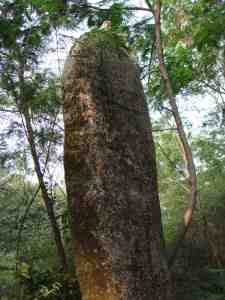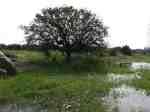 The practice of demarcating portions of forests as “off limits” for all human intervention has a long history in our country, and indeed across the world. This traditional form of conservation, of declaring some space as “sacred” has been increasingly recognized as a very effective means of preserving biodiversity, particularly as the pressure on land use increases and urbanization spreads.
The practice of demarcating portions of forests as “off limits” for all human intervention has a long history in our country, and indeed across the world. This traditional form of conservation, of declaring some space as “sacred” has been increasingly recognized as a very effective means of preserving biodiversity, particularly as the pressure on land use increases and urbanization spreads.
Sources list about 750 known sacred groves in Andhra Pradesh, and this has been extensively documented by the World Wide Fund and the AP state office of Sacred and Protected Groves. Each of the 23 districts have some, ranging from 2 in Adilabad to 133 in Chittoor. Hyderabad had 10 of which essentially nothing remains, and this includes the “protection to vegetation given by temples, mosques and idgahs, [as well as] churches in these districts. About 134 species of medicinal rare and endemic plants are reported from these sacred sites“.

Sanctuaries and such sacred groves are really the last refuge of wildlife as well. Coexistence is difficult: we humans tend to view any interference by other animals as a threat, unless of course we see them as food instead. And we really don’t think that other animals have rights, at least not in the way we think of “Human Rights”. Anyhow, whether animals have rights or not, a very tricky question that generations of philosophers and lawyers (among others) have grappled with, one way in which we can at least try to see that our campus retains some of the biodiversity that it is famed for is that we set out to protect it using some ancient techniques in addition to the modern.

Some of you were at the meeting we held in DST the other day, on the campus master plan, and saw first hand what the pressures on the land were, and what little usable land is really all that is left. We have to ensure that the land that is there is for generations to come, to be able to accommodate the numbers of students we plan to have at the University in the future, and to keep the biodiversity there is now without letting it dwindle…
The three lakes on campus and the land surrounding them are prime candidates for our own modern day sacred areas. Given the importance of water and the role it is going to play in the coming times, there is no doubt we should conserve and preserve this very vital resource. And the sheet rock. There are large tracts of the campus that are covered with wonderful rock formations, many of which we need to keep in their pristine form, both for their sheer physical beauty as well as the biodiversity they sustain.
Our sacred groves, our पवित्र वन.

“Atque inter silvas academi quaerere verum”
Horace
“And Seek for Truth in the Grove of Academe.”
Over fifteen years ago, I used to visit HCU campus every vacation and spend days skirting the amazing lakes looking for reptiles and birds and nights camping out on the rocks. Monitor lizards were an everyday sight, as were cobras, trinket snakes, rock pythons, Russell’s vipers, bronze backs, wolf snakes and all kinds of healthy-sized tortoises and terrapins. We would regularly encounter mammals like mongoose and black-naped hare and some spectacular local and migrant birds.
We would dismantle wire traps set by poachers and put out small fires with some help from those peculiar ‘fire-dogs’ – campus strays who zealously shoveled and stamped along with us for some unfathomable reason!
Today, tetrapacks have successfully replaced terrapins; PET bottles have ousted pythons. There is non-biodegradable waste everywhere, littering the backyards of canteens, hostels, even departments and gradually colonizing every green patch on campus. And I haven’t seen a monitor lizard in nine years even though I teach on campus.
I am so glad the Vice Chancellor is actively backing the fragile green movement on campus. Saving the precious lakes and making the campus plastic-free are vital first steps, I think. I hope this will mean waste segregation will be facilitated and rigorously implemented in the departments, canteens and hostels. I would like to suggest that volunteers and experts conduct a baseline census of what remains of the wildlife on the HCU campus – particularly the very vulnerable land and water-bound reptiles, amphibians and small mammals. This can be followed up periodically.
I feel that when we plan the campus we should identify some already existing sacred groves here. Apart from reserving a large tract designated to be preserved, some patches though very small and unmanicured scattered between manicured buildings and lawns might be valuable both aesthetically and ecologically. Some areas that have prolific and varied life though very small come to my mind.
a) One is the patch on the left side in front of the science complex. This is habitat to a variety of animals including, mongoose, chameleons, a variety of plants and insects not common in other parts of the campus. It gets soggy during and after rains for considerable time and is yet not connected to a large water body. This is a niche for many of these species.
b) Behind the post office. This is probably the only patch in the campus that has huge trees. Befittingly in this area we find both Verditer flycatcher and Paradise flycatcher. Trees are so tall that we dont even know what we are missing.
c) The bamboo grovenext to the A type staff quarters and the plant science facility.